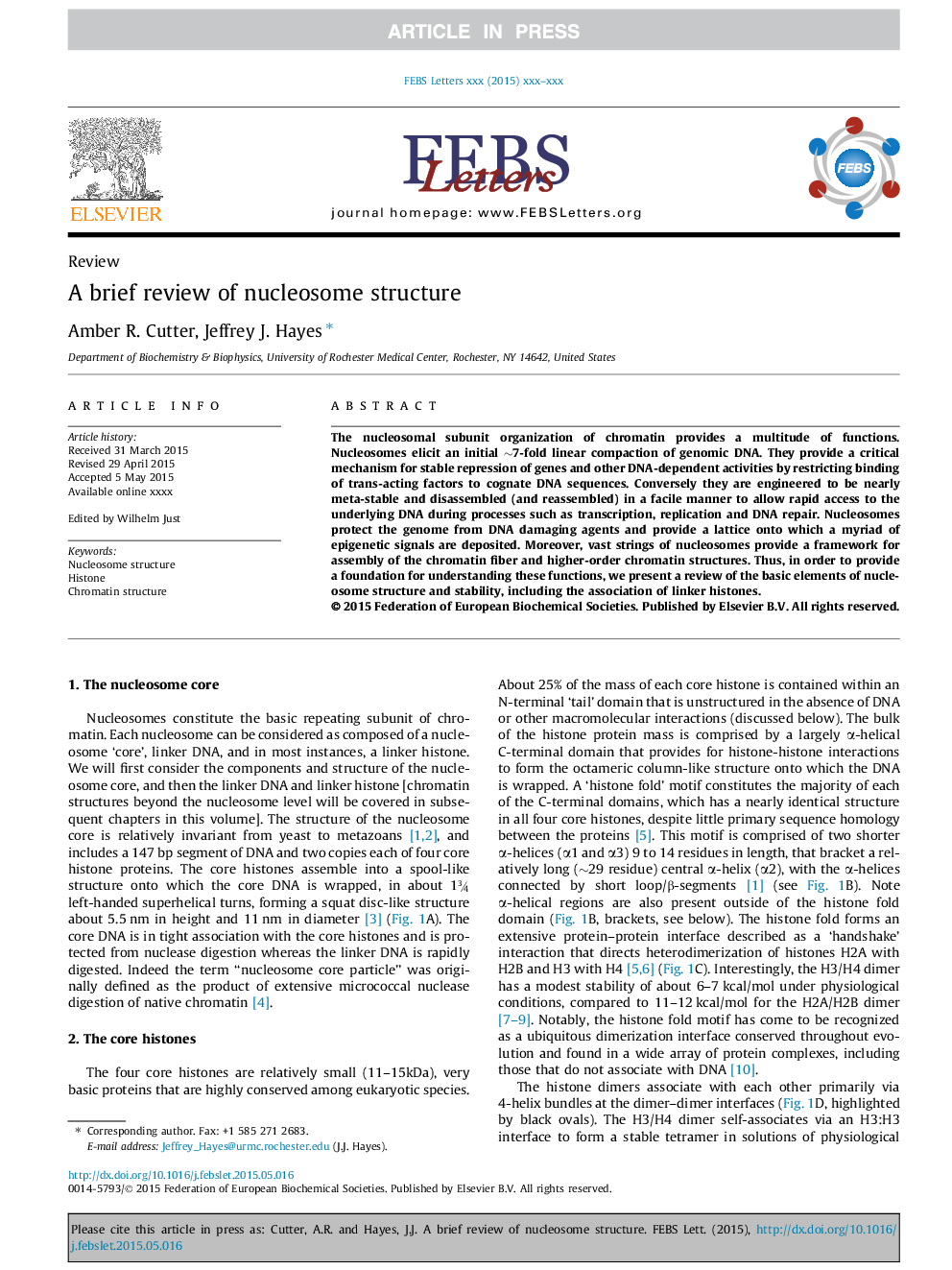| Article ID | Journal | Published Year | Pages | File Type |
|---|---|---|---|---|
| 10869849 | FEBS Letters | 2015 | 9 Pages |
Abstract
The nucleosomal subunit organization of chromatin provides a multitude of functions. Nucleosomes elicit an initial â¼7-fold linear compaction of genomic DNA. They provide a critical mechanism for stable repression of genes and other DNA-dependent activities by restricting binding of trans-acting factors to cognate DNA sequences. Conversely they are engineered to be nearly meta-stable and disassembled (and reassembled) in a facile manner to allow rapid access to the underlying DNA during processes such as transcription, replication and DNA repair. Nucleosomes protect the genome from DNA damaging agents and provide a lattice onto which a myriad of epigenetic signals are deposited. Moreover, vast strings of nucleosomes provide a framework for assembly of the chromatin fiber and higher-order chromatin structures. Thus, in order to provide a foundation for understanding these functions, we present a review of the basic elements of nucleosome structure and stability, including the association of linker histones.
Related Topics
Life Sciences
Agricultural and Biological Sciences
Plant Science
Authors
Amber R. Cutter, Jeffrey J. Hayes,
